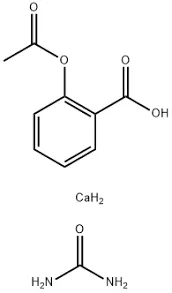- Afrikaans
- Albanian
- Amharic
- Arabic
- Armenian
- Azerbaijani
- Basque
- Belarusian
- Bengali
- Bosnian
- Bulgarian
- Catalan
- Cebuano
- Corsican
- Croatian
- Czech
- Danish
- Dutch
- English
- Esperanto
- Estonian
- Finnish
- French
- Frisian
- Galician
- Georgian
- German
- Greek
- Gujarati
- Haitian Creole
- hausa
- hawaiian
- Hebrew
- Hindi
- Miao
- Hungarian
- Icelandic
- igbo
- Indonesian
- irish
- Italian
- Japanese
- Javanese
- Kannada
- kazakh
- Khmer
- Rwandese
- Korean
- Kurdish
- Kyrgyz
- Lao
- Latin
- Latvian
- Lithuanian
- Luxembourgish
- Macedonian
- Malgashi
- Malay
- Malayalam
- Maltese
- Maori
- Marathi
- Mongolian
- Myanmar
- Nepali
- Norwegian
- Norwegian
- Occitan
- Pashto
- Persian
- Polish
- Portuguese
- Punjabi
- Romanian
- Russian
- Samoan
- Scottish Gaelic
- Serbian
- Sesotho
- Shona
- Sindhi
- Sinhala
- Slovak
- Slovenian
- Somali
- Spanish
- Sundanese
- Swahili
- Swedish
- Tagalog
- Tajik
- Tamil
- Tatar
- Telugu
- Thai
- Turkish
- Turkmen
- Ukrainian
- Urdu
- Uighur
- Uzbek
- Vietnamese
- Welsh
- Bantu
- Yiddish
- Yoruba
- Zulu
ធ្នូ . 05, 2024 23:43 Back to list
Oxytetracycline Injection for Effective Treatment of Bacterial Infections in Veterinary Medicine
The Role of Oxytetracycline Injection in Veterinary Medicine
Oxytetracycline is a broad-spectrum antibiotic that belongs to the tetracycline class of antibiotics. It was first discovered in the early 1940s and has since become an essential component in the field of veterinary medicine, particularly in the treatment of various bacterial infections in both livestock and companion animals. The injection form of oxytetracycline provides a powerful and efficient means of administering this medication, allowing for rapid absorption and therapeutic effects.
One of the primary advantages of oxytetracycline injection is its effectiveness against a wide array of gram-positive and gram-negative bacteria. This includes pathogens responsible for common infections in animals, such as pneumonia, urinary tract infections, and foot rot. The ability of oxytetracycline to inhibit protein synthesis in bacteria makes it a valuable tool in managing infections, reducing morbidity, and improving overall animal health.
In veterinary practice, oxytetracycline injection is often used in cattle, sheep, swine, horses, and dogs
. For instance, in cattle, it has been effective in treating and controlling respiratory diseases caused by bacterial pathogens like Mannheimia haemolytica. In swine, it is used to manage conditions such as erysipelas and leptospirosis. The quick action of the injectable form is particularly beneficial in large animals where prompt treatment can prevent the spread of infections and minimize economic losses for farmers.oxytetracycline inj

Moreover, the use of oxytetracycline injection can play a crucial role in preventative health measures. In herd management, veterinarians may administer oxytetracycline to at-risk animals, especially during high-stress periods such as weaning or transportation. This proactive approach helps to reduce the incidence of respiratory diseases, which can be triggered by stress and environmental changes.
However, the use of oxytetracycline injection is not without concerns. One of the significant issues surrounding the use of tetracycline antibiotics is the potential for the development of antibiotic resistance. Overuse and misuse of antibiotics in veterinary medicine can lead to resistant strains of bacteria, which pose a threat to both animal and human health. Therefore, it is essential that veterinarians adhere to guidelines regarding the appropriate use of oxytetracycline, ensuring that it is used judiciously and only when necessary.
Additionally, oxytetracycline is associated with certain side effects, including gastrointestinal upset and potential allergic reactions. Veterinarians must evaluate each animal's health status and consider potential contraindications before administering the injection. Proper dosage, timing, and monitoring are crucial in maximizing the therapeutic effects while minimizing adverse events.
In conclusion, oxytetracycline injection remains a vital component of veterinary medicine, providing an effective treatment option for a variety of bacterial infections in animals. Its broad-spectrum activity, rapid onset of action, and applicability in herd health management make it invaluable in veterinary practice. However, responsible use and ongoing monitoring of antibiotic resistance are critical to ensuring the long-term efficacy of this important medication. As we continue to face challenges in animal health, particularly regarding infectious diseases, the role of oxytetracycline, along with other antibiotics, will remain pivotal but must be balanced with stewardship efforts to protect both animal and public health.
-
Guide to Oxytetracycline Injection
NewsMar.27,2025
-
Guide to Colistin Sulphate
NewsMar.27,2025
-
Gentamicin Sulfate: Uses, Price, And Key Information
NewsMar.27,2025
-
Enrofloxacin Injection: Uses, Price, And Supplier Information
NewsMar.27,2025
-
Dexamethasone Sodium Phosphate Injection: Uses, Price, And Key Information
NewsMar.27,2025
-
Albendazole Tablet: Uses, Dosage, Cost, And Key Information
NewsMar.27,2025













